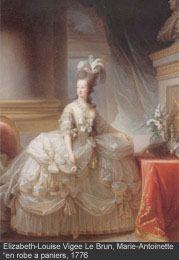
Abstract: In times of political and social instability, the inhabitants of a country desire a stable form of government. In the 18th and 19th centuries, the public was extremely critical of their rulers, which reflects the tremendous pressures the country was under because of the turbulent nature of the times. Marie Antoinette, Empress Eugénie de Montijo, and Joséphine de Beauharnais were all queens of France, but were not ethnically French, and therefore negatively viewed as “other,” which was perceived in their fashion, morals, and public and private actions.
To connect with the public, the state released official narratives, or court paintings, of these women— figures who ruled alongside the kings and emperors of France. The salons and academies exhibited these paintings, but they also they acted as official propaganda in the form of portable talismans.
Public opinion is an important concept that emerged in France in the 18th century as a result of the institutions established by the Renaissance. The public was able to voice their views of the government through mass printed underground literature. These images inserted new discourse into society, especially about the queens, thus challenging or reinforcing the ideology of the court paintings released by the state.
I have concluded that court paintings follow a specific tradition of fashion, style and iconography and the public accepts the discourse from the painting as long as they receive it in this form. While court paintings tried to assimilate the queens into French society, the cartoons negated any of this discourse.